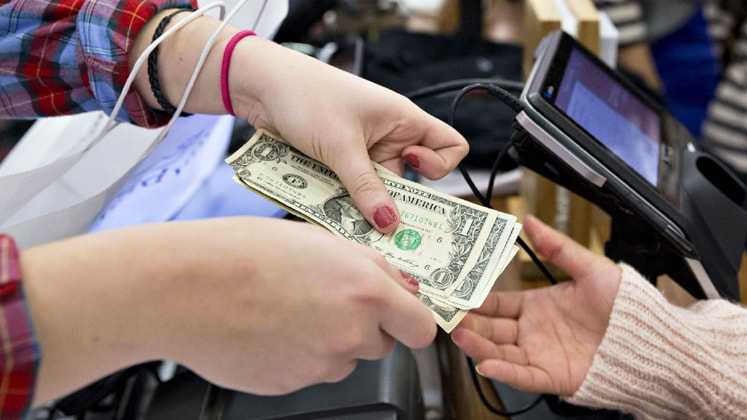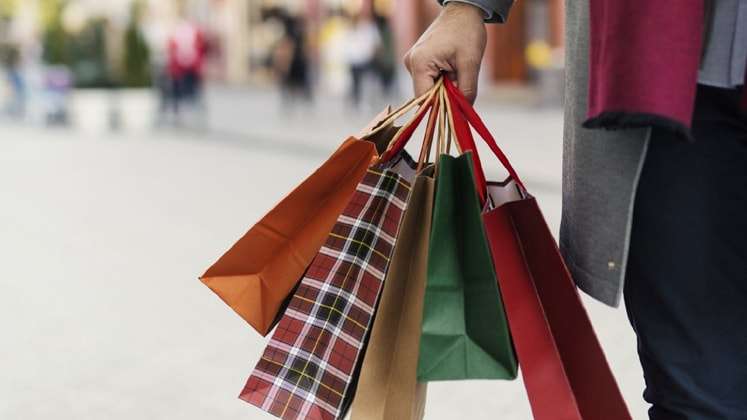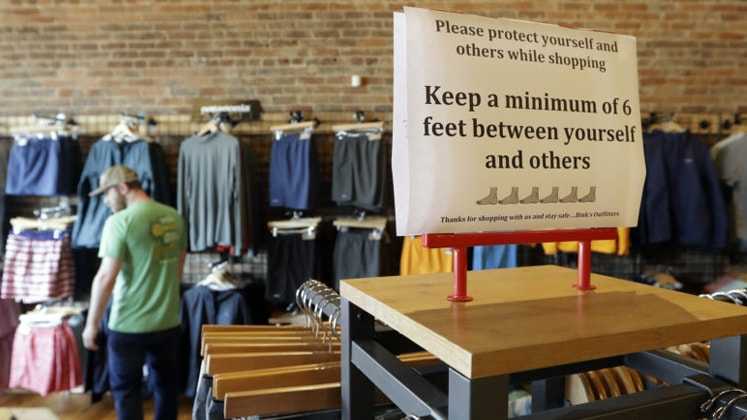
Apart from changing every aspect of our daily lives and sending the world economy on a downward spiral, it seems like coronavirus may have lasting effects that could hinder a full-fledged rebound for most industries. While commodities deemed essential may be booming, non-essentials have pretty much become non-existent on shoppers’ lists.
According to data compiled by GlobalData, a leading insight company, global retail spending is expected to take a dive of US $ 549.7 billion in the year 2020. The grim news denotes a fall of 3 per cent in consumer spending rather than the estimated 5 per cent it was supposed to go up this year. A decline of this magnitude will adversely affect millions of retailers the world over.
A recession or depression is typically triggered by a shock to either supply or demand. What we are seeing now is a shock to both. In addition, this is very different from previous economic downturns because it is created artificially by Government orders to shut down to protect public health. In such times of uncertainty, consumer spending becomes erratic and hard to predict.
Countries have been hit differently and so their consumption patterns are varied. Although some that have lifted restrictions seem to be showing optimistic trends, it is safe to say the upheaval caused by this crisis has altered the illusion of needs created by different markets. People are realising the importance of being in control of their financials lest they fall prey to another global catastrophe.
A global affair

The epicentres of trade, commerce and finance of the world lie in North America and Europe, and unfortunately also of the pandemic. Therefore, it is unsurprising to note that the biggest setbacks in spending are likely to come from these two continents. Europe’s figures are expected to drop 4.4 per cent, while North America is leading with a 4.8 per cent downturn.
Consumer spending is one of the most important driving forces for global economic growth. Beyond impacting some of the factors that determine consumer spend, such as consumer confidence, unemployment levels, or the cost of living, COVID-19 has also drastically changed how and where consumers choose to spend their hard-earned cash during a time of financial crunch. Despite consumers showing intent in February to just shift channels for spending and not decreasing the amount, as the crisis has continued for the better part of a year, they realise the importance of preserving cash.
It is in line with this characteristic that other continents have also seen a decline despite playing host to a considerably lesser number of cases. The Middle East and Africa are likely to experience a 2 per cent decline and South America would see a 1.9 per cent fall.
Asia Pacific, on the other hand, is facing a significantly smaller decline of 1.3 per cent, but to put that in perspective, GlobalData had earlier predicted a growth of 7.2 per cent in spending for the region. It might be a smaller decline with respect to other continents but is a huge loss for retailers overall.
Although every industry is going through their fair share of struggle, some are in a better position to weather the impact of the crisis than others. Globally, consumers continue to spend consciously—and in some cases, spend more compared to pre-pandemic levels— especially when it comes to some necessities such as groceries and household supplies.
Due to changes in media consumption habits, consumers in almost all countries surveyed by McKinsey & Company say they will increase their expenditure on at-home entertainment. This is especially true for South Korea, a country that already houses a massive gaming culture.
As restrictions in China lifted, many categories such as gasoline, wellness and pet-care services appeared to be bouncing back, which could be a positive sign for other countries following a similar trajectory. But while consumers ramp up their spending on the things they need, they also anticipate spending less in other categories.
The Indian outlook

In a country like India, people are highly conscious of their budgets, and the longer the lockdown continues, the more people will want to preserve money to weather the difficult months ahead. It is for this reason that discretionary spending has taken a dive with sales coming to a grinding halt for a few companies, though some in the food and beverages department as well as home and personal hygiene categories have benefited from panic buying and stock-piling by consumers.
In a monetary policy report, the RBI states that although COVID-19’s impact on inflation is still ambiguous, there will likely be a decline in food prices, which will be offset by the increase in prices of non-food commodities. They also expect aggregate demand to take a hit due to a global recession caused by the disruption in supply chains, travel and tourism and loss of jobs.
Despite the expected sharp slowdown of India’s economy in March, it may have still clocked a GDP of about US $ 3,000 billion for the year ending 31 March 2020. Private consumption accounts for about 58 per cent of GDP or US $ 1,700 billion. Of this, about 48 per cent (or US $ 825 billion) is consumer spending on merchandise and even though the current quarter and financial year started on a rough note, companies expect bigger shocks are in line.
Consumer demand was already slowing before the outbreak had hit India, now only to be exacerbated during the current times. With plants shut for manufacturing or opening up partially, daily wagers moving away from industry-rich areas due to lack of facilities during lockdown and pay-cuts across companies, consumer sentiment has weakened and supply chains disrupted thwarting a successful rebounding of the economy, according to a report by Emkay Global Financial Services.
Apparel sector in doldrums
All the industries might be facing tough environments to resuscitate themselves from, but two sectors that can expect harsh months ahead are travel & tourism and apparel. People are reconsidering their travel plans for at least a year, fearing catching the virus from hosts in other countries. Nations, on the other hand, have suspended the entry of tourists, except for essential travel, which is not expected to change till a vaccine is found.
As for apparel, lesser people are venturing out on the streets, the norms of formalwear have been done away with, as we grapple to get our points across to each other via Zoom meetings and the need to impress with new outfits has become illusive as more people find themselves running their households with either pay-cuts or dipping into their savings due to layoffs.
The US Commerce Department announced that retail sales slumped as much as 8.7 per cent in March and the clothing businesses have been the worst hit. With a 50.5 per cent decline in sales, it now becomes intelligible to hear the news of popular brands and stores filing for bankruptcies and going out of business.
As consumers hold back on their spending, clothing brands of all shapes and sizes are forced to scale back production and reimagine how they position themselves. “It’s an unprecedented interruption of an industry that has relied on speeding from one season’s sales to the next. And it is bringing with it a new sense of connectedness, responsibility and empathy,” as told by Tamsin Blanchard to the Guardian .
As many companies in India and abroad cancel their pre-Fall collections and predict lower manufacturing for their Autumn/Winter lines, many brands and manufacturers have dedicated factories to the production of PPE. While this may not be a solution to the problem of demand, it is a step up from having their operations at a complete standstill.
However, the pandemic may provide an opportunity for the apparel world to ‘reset and reshape’. According to the report The State of Fashion 2020 by Business of Fashion and McKinsey, the consumer mindset was already showing signs of shifting in certain directions before the pandemic.
The report suggests that the quarantine has accelerated trends like intolerance for wasteful business practices and expectations for companies to be more purpose-driven and sustainable in their approach. Other than this, the shift to digital platforms has been steady but gradual, and this period has shown the need for e-commerce to both companies who refused to adopt it earlier and for consumers who resorted to online shopping when they couldn’t step out. Seasonless fashion, discounting, localised supply chains and corporate innovation along with preserving cash for these uncertainties are some of the prospects fashion companies will have to get used to in order to change with the times.
That being said, it can be expected that there will be a Darwinian shakeout, leading to the collapse of retailers that weren’t prepared for a catastrophe as such, leaving the strong to take over market shares. Companies that were already struggling to remain viable before the crisis will be weeded out, leading the way for massive waves of consolidations and bankruptcies.

Leave a Reply